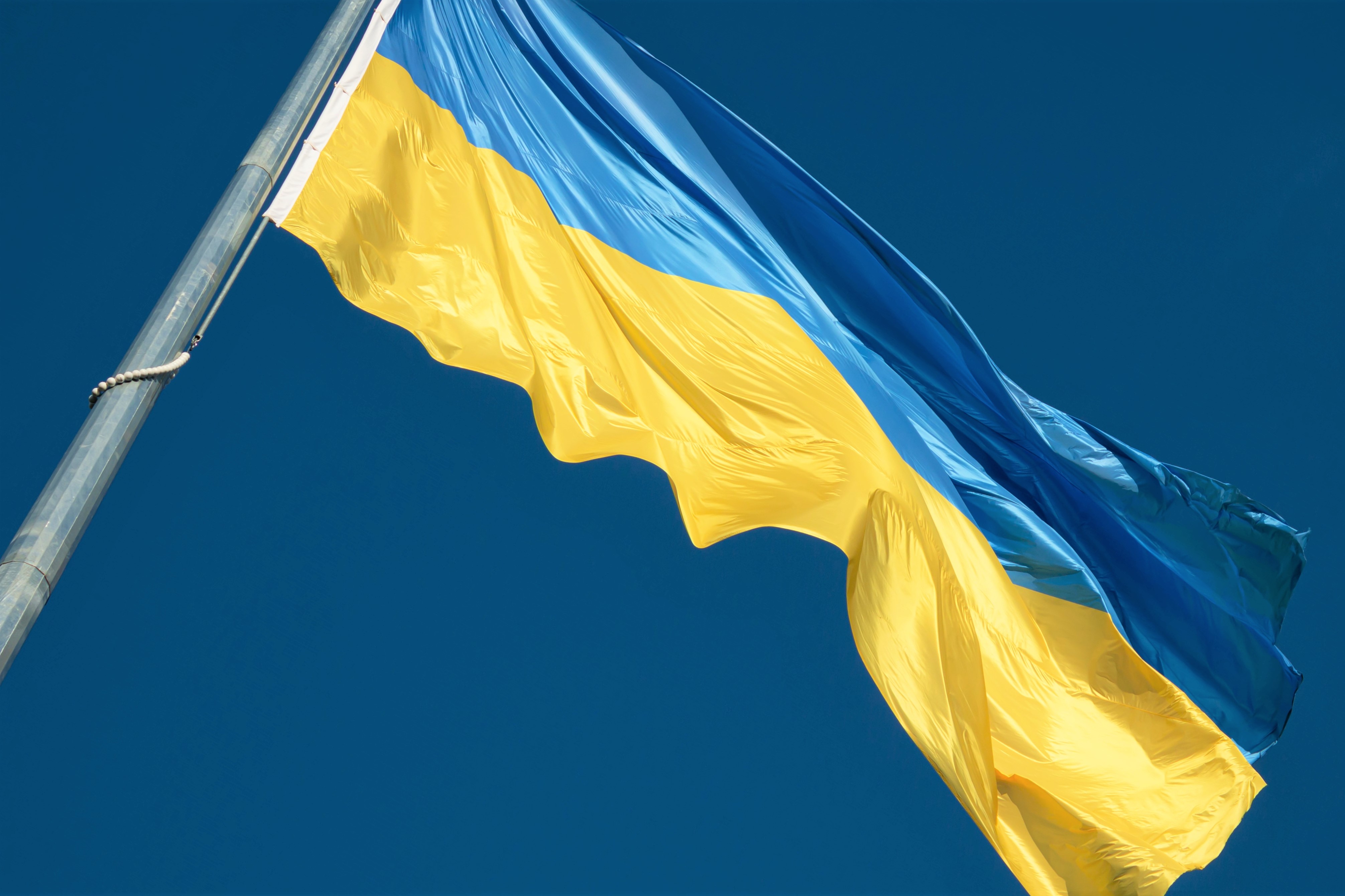Navigating fintech innovation
Flagship Advisory Partners is a boutique strategy and M&A advisory firm focused on payments and fintech. We serve clients globally and have a team of 40+ professionals who have a unique depth of knowledge in payments and fintech.
Latest Insights
Filter by
Topics & Themes
Topics & Themes

Apply
Clients
Clients

Apply
Type
Type

Apply
Topics & Themes
Clients
Type
Selected:
This episode explores why embedded lending is emerging as the next big frontier after embedded payments in Europe and North America. Charlotte Al...
Podcast
25 November 2025
Most Read Insights
Yuriy Kostenko
Recent Posts
Infographic: 6 Years after the EU Launch of Apple Pay, over 44% of Europeans use Mobile Wallets
Infographic
21 Dec 2023
General Commentary & Highlights A mobile wallet is a payment tool that stores the user’s payment credentials on a mobile device, which can be used to pay in stores and/or remotely (incl. person-to-person and C2B mobile commerce The prevalence of mobile wallets has risen in Europe, stemming from tech advancements in acceptance, heavy presence of smartphones, and consumer desire for convenience and speed Together with North America, Europe is still lagging in mobile wallet adoption vs. other regions, primarily driven by the fact that cards (which have high penetration among Europeans) persevere Please do not hesitate to contact Yuriy Kostenko at Yuriy@FlagshipAP.com with comments or questions.
cardissuing,compliancesecurity,perspectiveonkeyevents,processingtechnology
psps
infographic
Fintech M&A in Europe Hits New Low In the Second Half of 2023
Infographic
8 Dec 2023
General Commentary & Highlights Investments in the European fintech sector have slowed down in the second half of 2023 but have started to show signs of recovery recently Challenging macro-economic conditions and concerns of depressed asset valuations have been acting as key obstacles in the recuperation of fintech M&A activity in Europe Feedback from investors and the volume of deals that are currently in flight, however, suggest that deal activity will recover in 2024 as fintech M&A returns to pre-2020 level. Please do not hesitate to contact Yuriy Kostenko at Yuriy@FlagshipAP.com with comments or questions.
ma,perspectiveonkeyevents
financialinvestors
infographic
Infographic: Return to In-store Payments - Benelux Market 2022
Infographic
8 Mar 2023
General Observations Card payments via point-of-sale bounced back in 2022 across the Benelux, experiencing the best performance yet, with year-over-year growth reaching ~20%. Conversely, e/m-commerce payments in the Benelux slowed noticeably. Local payments such as iDeal dropped below 10% in growth for the first time in its history. 30% of all in-store card payments in the Netherlands were contactless payments via smartphones & wearables in 2022, increasing the share by a whopping 10% in one year Continuing to ride the pandemic tailwinds, 58%+ of Belgians used their smartphones to make QR-based mobile payments with a Payconiq mobile payment scheme in 2022 Please do not hesitate to contact Yuriy Kostenko at Yuriy@FlagshipAP.com with comments or questions.
paymentsacceptance
merchantsbrands
infographic
War in Ukraine: Impact on Payments
Article
30 Jun 2022
Russia launched a full-scale military invasion of Ukraine on 24 February 2022 and with it triggered a new era of geopolitical tensions and economic repercussions. In response to Russia’s aggression, the West slapped Russian entities and individuals with a number of sanctions with unprecedented scope and speed. The payments sector became a tool used to punish Russia for its invasion of Ukraine. Russia’s exclusion from SWIFT and the suspension of operations by international card schemes have become a cautionary tale for the rest of the world. This event inevitably impacted the payment provider industry, yet not necessarily in obvious ways. In this briefing, we summarize the effect the War in Ukraine has had on the payments industry in Russia and across the globe. Russia’s Exclusion from SWIFT The first major payments tool used against Russia came in a form of exclusion from the global payment system SWIFT, cutting off Russia’s ability to trade in the international market. Prior attempts by the Russian Central Bank to create its own alternative to SWIFT, a transfer system called SPFS, has largely failed, with this network assembling only a small list of mainly Russian banks. Although Russia is working on a new blockchain payments system to replace SWIFT and attempting to establish a lifeline to China’s own SWIFT copycat, CIPS, there are no short-term solutions for the Russian government. Crypto currency could eventually be an alternative to circumvent SWIFT. Crypto, however, is volatile (see latest bitcoin performance in the figure 1 below), and the Kremlin is unlikely to rely on a payment form that it cannot directly control. Other markets hit by high inflation or currency devaluations, such as Nigeria, have been seen to turn to crypto, although consumers are often risk-averse, crypto acceptance is still limited, and physically paying with crypto can be challenging. FIGURE 1: Bitcoin to US Dollar Price (USD) Suspension of International Payment Schemes in Russia To comply with the sanctions imposed on Russian financial system, most international card networks suspended their operations in Russia. Giants including Visa, MasterCard and American Express no longer offer payment processing and support to Russian banks, and halted processing of transactions by Russian-issued cards, effectively disabling cross-border operations. The Russian Central Bank is now leaning on a politically friendly Chinese alternative, UnionPay, to help close the gap in international card payments. UnionPay would need to approach this relationship with caution, however, given that its system uses US dollars in its operations and its cooperation with Russian banks could be threatened with fines or worse. Domestically, the impact of suspended international schemes is limited as many Russian cardholders can simply shift to a local card scheme, MIR. This scheme was introduced by the Russia’s National Payment Card System following sanctions post Kremlin’s annexation of Crimea back in 2014. MIR is already the second largest card issuer in Russia and even before the war with Ukraine accounted for c. 37% of all card payments in the market (see Figure 2 below). The Russian Central Bank was ultimately successful in defending domestic digital payments, although outside of Russia, MIR has limited acceptance in only a handful of small neighboring markets such as Belarus and Armenia. Few Russians considered opening a card account in neighboring Asian countries to be able to continue making payments internationally, but for most this capability has been blocked. FIGURE 2: Select Pre-War Card Payment Statistics in Russia The magnitude and velocity of sanctions on the Russian payments system has left many nations concerned. Albeit not always politically motivated, many nations previously established local debit card schemes and interbank networks with local data autonomy and control (see Figure 3 below). Such a position de-risks dependency on global card networks, especially US-based international schemes including Visa and MasterCard. As result of sanctions on Russia and the relative success of Russia’s domestic card scheme, other governments, especially those unfriendly to the West, are likely to consider developing their own domestic payment systems. The emergence and development of local schemes and data sovereignty rules will certainly add complexity for multi-national payment providers. FIGURE 3: Select Key Local Debit Card Schemes Impact on International Payment Service Providers With the suspension of Visa/MasterCard, the Russian payments market became inaccessible to cross-border payment service providers (“PSPs”), however, the damage to the international PSP community has been minimal. Even before the war, Russia accounted for only 1% of global digital payments. Restrictive local regulatory requirements and a long list of local alternative payment methods have also kept over 95% of Russian payments in the hands of home-grown providers. Furthermore, the Russian payments market lost appeal to multi-national PSPs due to the departure of many multi-national merchants, who were pressured by consumers and investors to unwind operations in Russia. The challenges facing payment providers are not as obvious as they may seem. Not all PSPs have the necessary technical capabilities to react promptly when national governments call for action to enforce their sanctions. A large hidden impact is the increased prominence of rigid Know-Your-Customer (“KYC”) and Know-Your-Business (“KYB”) monitoring tools that many players do not have in place. As Western sanctions continue to expand, regulatory oversight will intensify, with a particular focus on Russian Ultimate Beneficiaries. These developments are likely to prompt adoption of digital KYC and KYB tools that many PSPs have yet to put on an investment agenda. A more obvious impact the War in Ukraine will have on the PSP community is the deceleration of payments volumes, particularly in European markets. As Russia continues to use its energy supplies to apply pressure on Brussels, consumers throughout the European Union face rising energy bills and their confidence continues to decline (see figure 4 below). Many consumers are expected to cut down on spending in the near-term. Coupled with the recent rupture of the Covid e-commerce bubble (see Flagship’s infographic: COVID e-Commerce Bubble Has Officially Burst), payment providers are unlikely to see stellar performance in the coming months. FIGURE 4: Consumer Confidence Index in the European Union Key Observations The most immediate impact on multinational payment providers from Russian’s war on Ukraine will be the resulting economic uncertainty and direct impacts on Western consumers and businesses. In the near-term, multinational payments providers are likely to speed adoption of more robust digital KYC and KYB tools to enable them to better comply with sanctions and track ultimate beneficiaries. Additionally, despite the current challenges in the crypto market, PSPs are likely to increasingly consider adding crypto acceptance to meet growing consumer demand. The longer-term impacts of Russia’s invasion of Ukraine are likely to be the most meaningful. Russia’s rapid exclusion from the international payment system will prompt many governments and national banks to assess the extent of their dependency on global financial networks, particularly those that can be influenced by the US, and to reconsider the associated risks. The knock-on effect of domestic payments data sovereignty has already become a key discussion topic, and many national authorities are likely to build and promote the use of their own local card schemes and inter-bank networks, mandate connectivity to domestic switches, and increase data sovereignty requirements. As a result, international payment providers will face increased complexity demands on their product development roadmaps. Please do not hesitate to contact Yuriy Kostenko Yuriy@FlagshipAP.com with comments or questions.
perspectiveonkeyevents
creditfinancialinstitutions
article
Brazil: Defining Fintech in LatAm
Article
3 Nov 2021
Brazil has evolved from a cash-centric society to one of the most dynamic digital payments markets in the world and a clear bellwether for fintech in the Latin American region. Digitization of Brazilian commerce, payments, and banking accelerated during the pandemic coupled with the government’s efforts to drive financial inclusion. The magnitude of the Brazilian economy and population, paired with the rapid evolution of its payments industry, makes Brazil one of the most attractive payments marketplaces in the world for payment service providers. However, success in the intensely competitive Brazilian payments market requires cutting-edge innovation and deep localization to compete with capable local vendors. High Growth in Electronic Payments Brazil is a high growth payments market. From 2016 to 2020, card payments at POS grew at 14% while card-not-present volumes grew at 23% (see Figure 1). The value of payments via cards has already surpassed cash and is on pace to reach ~2x cash payments by 2025. FIGURE 1: Card Payments in Brazil ($R trillions) Sources: Central Bank of Brazil, ABECS (Brazilian Association of Credit Card Companies and Services) Brazil is the most terminalized market in the world, as measured by per-capita penetration. As shown in Figure 2, Brazil has more than 1 terminal for every 10 people, which is more than double the terminalization rate seen in mature cards markets such as the U.S. and U.K. One reason for this leading global terminalization rate is the incredible success of mPOS in Brazil. Almost half of the terminal installed base in Brazil are mPOS devices, which are low cost and well-suited for micro-merchants and rural environments. The card terminal installed base in Brazil grew an impressive 42% from 2016 to 2020, compared to global growth of 15%. FIGURE 2: POS Terminal Statistics Source: Central Bank of Brazil, Flagship estimates Both consumers and the long tail of merchants are rapidly migrating to digital payments. Consumers have long favored credit cards in Brazil due to their enablement of installments. Merchants in turn must also support installments. This, along with the deep penetration of mPOS, results in broad acceptance of cards, even among micro-merchants. The pandemic has driven digital payments further into the under-banked population (who do not have credit cards). According to the survey carried out by the National Bank of Brazil, over 36% of Brazilians stated that they opened some form of a digital bank account during the pandemic. To access ‘coronavoucher’ aid program in Brazil, low-income members of the society had to open a digital bank account with an attached virtual debit card. The acceleration of financial inclusion post the pandemic in Brazil is expected spur a new wave of digital payments adoption among traditional cash users. Shifting Payment Behaviors and Payment Schemes The landscape of Brazilian payments is a complex network of both local and global payment methods, which is constantly changing. Local debit card scheme Elo has 21% of the cards market and shows no signs of losing share to international schemes (see Figure 2). Installment payments via cards are ingrained in the Brazilian consumer payments culture. Brazil has several local digital wallets as well as a paper-based local scheme, Boleto, that is still popular among older online consumers (see Figure 3). FIGURE 3: Payments Mix Source: Global Data (2020 est.), Flagship Advisory Partners (2021 est.) In parallel with the roll-out of open banking and a push for financial inclusion, recently launched real-time bank transfer payment scheme PIX is the new face of Brazilian payments. PIX offers merchants lower processing costs than cards, and is free for end customers. Heavily promoted by the Central Bank of Brazil, adoption of PIX is rapidly growing for both person-to-person transfers and person-to-business payments and has gained early traction (see Figure 4) by actively displacing cash and the legacy Boleto payments scheme. PIX could disrupt aspects of the traditionally lucrative cards market, while continuing to stimulate high growth in the total base of digital payments. The plethora of local payment methods means that merchant payment service providers must be highly localized to succeed. FIGURE 4: PIX Payments in Brazil (millions of transactions) Source: Central Bank of Brazil Intensifying Competition Among Payment Acceptance Providers The Brazilian market for merchant payment services is intensely competitive. Traditional market leaders Cielo and Rede have lost market share as a result of fintech innovators better positioning for small merchants and digital commerce (see Figure 5). Fintechs including Stone and PagSeguro initially gained traction in the small merchant segment with inexpensive and easy-to-use mPOS products and are now moving up market and thriving in e-commerce and SaaS-integrated payments. FIGURE 5: Top Card Merchant Payment Providers (% card payment turnover) Source: Company Quarterly Earnings, Cielo Management Presentations Profitability in Brazilian merchant payments has traditionally been one of the highest in the world. However, ongoing price competition is eroding gross margins. Cielo’s and PagSeguro’s net revenue margins, for example, compressed at a consistent rate of ~15% per annum in the last five years. Past reductions in interchange by the Central Bank of Brazil did not offer much breathing room to these providers with most of the surplus revenue quickly passing through into lower merchant pricing. Providers such as Stone are not shy in applying aggressive pricing strategies to move up-market, and with competition from PIX as a new low-cost payment method, the pricing pressure faced by Brazilian payment acceptance providers is far from over. To offset core payments price pressure, fintechs are increasingly expanding into broader digital banking services. Stone, dubbed by many as the “Square of Brazil”, offers a full suite of money management products to its small merchant segment, including digital bank accounts, cash advances, and insurance products. PagSeguro’s PagBank has ambitions to be the next digital banking leader and is attempting to become an Alipay-style super app with its own digital wallet, lending products, softPOS, and even payments via Tiktok. Outlook on Brazilian Payments Brazil is and will continue to be a high-growth market for digital payments. The already deep penetration of cards and card acceptance is now being augmented by acceleration of e/m-commerce. The next wave of growth and fintech innovators are digital commerce specialists such as d-local and Ebanx. Along with being a massive, lucrative, and innovative domestic market, Brazil also acts as a launching pad for global payment service providers keen to enter and expand across Latin America. Global providers such as Nuvei, Paysafe, Adyen, FIS, Global Payments, and others are investing to become more relevant across the region, although they face stiff competition from global-class Brazilian fintechs. Please do not hesitate to contact Yuriy Kostenko at Yuriy@FlagshipAP.com with comments or questions
innovations,paymentsacceptance
psps
article
No results found
Topics & Themes
A2A Payments
AI Artificial Intelligence
B2B Payments
Best Practices & Toolkits
Card Issuing
Compliance & Security
Credit
Embedded Finance & BaaS
Fintech & SaaS
Innovations
M&A
Open Banking
Payments Acceptance
Payments Orchestration
Perspective on Key Events
Processing & Technology
SaaS
X-Border Payments
.png)




